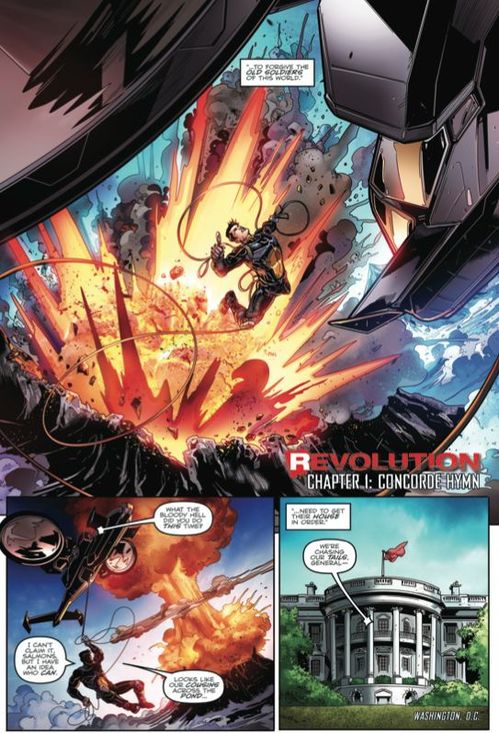IDW’s Hasbro Mash-Up Revolution Isn’t Revolutionary, But It Is a Ton of Fun
Main Art by John Byrne Comics Features Cullen Bunn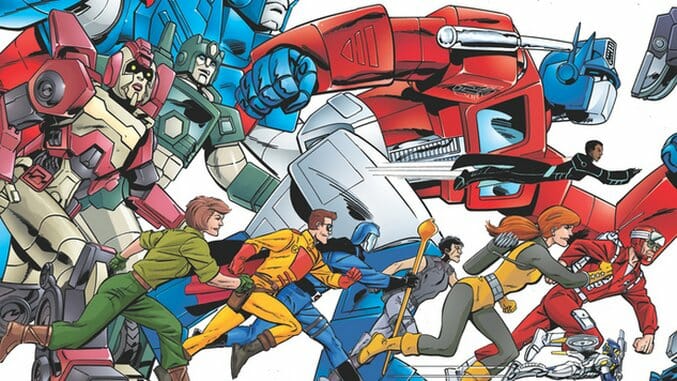
Comics and toys go together like Batman and Robin, brunch and white people or, as Cal Naughton Jr. famously said, cocaine and waffles. Long before movies were spun off toy franchises, the smaller-budget world of comics hosted series based on G.I. Joe, He-Man, Strawberry Shortcake and plenty of other plastic properties. Even Marvel and DC events like Super Powers and the original Secret Wars were inspired by toy lines. More recently, DC’s Bombshells comic—featuring an all-female lineup of World War II-era superheroes—started as figurines, which my secret decoder ring says is Latin for “fancy toys.” Since the days of yore, toys have inspired comics.
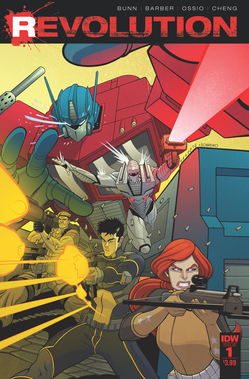 The toy comic to end all toy comics arrived last week in IDW’s Revolution event-a-palooza. Bringing together Hasbro properties Action Man, G.I. Joe, M.A.S.K., Rom, the Micronauts and the Transformers, Revolution begins as a five-issue main series and spins off into crossovers, tie-ins and the dawn of a shared universe. Based on the first issue, Revolution—written by John Barber and Cullen Bunn, with art by Fico Ossio—is at once ambitious and trendy, but fun enough to please anyone except the most rabidly toy-phobic.
The toy comic to end all toy comics arrived last week in IDW’s Revolution event-a-palooza. Bringing together Hasbro properties Action Man, G.I. Joe, M.A.S.K., Rom, the Micronauts and the Transformers, Revolution begins as a five-issue main series and spins off into crossovers, tie-ins and the dawn of a shared universe. Based on the first issue, Revolution—written by John Barber and Cullen Bunn, with art by Fico Ossio—is at once ambitious and trendy, but fun enough to please anyone except the most rabidly toy-phobic.
Beneath that fun, readers may detect a strong whiff of two psychological conditions that infect many corporate properties today: universe envy and reboot denial. Universe envy can be felt most often in the movies, as DC clumsily tries to catch up to the Marvel Cinematic Universe, and properties from Star Wars to Universal’s monster lineup (including Dracula, Frankenstein, the Wolf Man, etc.) try to establish their own shared universes. Hasbro is linking the exact same franchises in the movies as they are in Revolution, perhaps hoping their comics might feed the movies Marvel-style. For the corporate set, making a great movie or comic isn’t enough anymore: everything’s got to connect since Marvel’s Ponzi-verse has paid off so handsomely.
But as comic book and movie franchises reimagine, reinvent, refresh, rejigger and rebirth their all-new, all-linked universes, they avoid one r-word: reboot. The corporate-ese in IDW’s press release is a bit painful on this point: “It’s not a reboot, but an evolution of the continuity we’ve established as we open up a new chapter of storytelling involving all of these properties.” Methinks the publicist doth protest too much. Marvel made similar denials in the wake of last year’s Secret Wars, and DC insisted “It’s not a reboot…and it never was” when hyping Rebirth. If comic fans and journalists claimed that a company’s product promoted familial relations with chickens, they wouldn’t deny it as vigorously.

Revolution #1 Interior Art by Fico Ossio & Sebastian Cheng
The first issue of this mammoth event begins, appropriately, with a mountain blowing up. That explosion sets off a conflict between the two most famous Hasbro lines: G.I. Joe and the Transformers. The Transformers have already raised some suspicion thanks to an ominous declaration: “It is time for humankind to enter the cosmic community!” Hey, buy us a drink first! Writers Barber and Bunn create a delicious “shoe is on the other foot” scenario as G.I. Joe—the ultimate Americans—are on the frontlines against the Transformers, who are apparently being very “American” in their pursuit of resources and empire: that blown-up mountain is full of Ore-13, which can be turned into Energon. Just as critics of U.S. foreign policy believe we’re all about the oil, the Joes think the same of the Transformers.
Some of the situations in the first issue are just delicious. G.I. Joe is set to confront the Transformers over the destroyed mountain, but Mainframe (the Uhura of G.I. Joe) is stunned to report, “it looks like the robots are engaged in humanitarian efforts.” Barber and Bunn have a lot of fun with the natural conflict between super soldiers and giant space robots, including an exchange of insults such as “fleshy little nuisances” and “chrome-ass junkheap.” There’s even a sly commentary on racism, as Rom—another ‘70s galactic toy footnote—makes a silent but violent splash (no spoilers) that gets blamed on the Transformers, because all robots from space must be aligned, right? Obviously the G.I. Joes don’t know their toy franchises, or maybe they’re typical racist Earthlings.
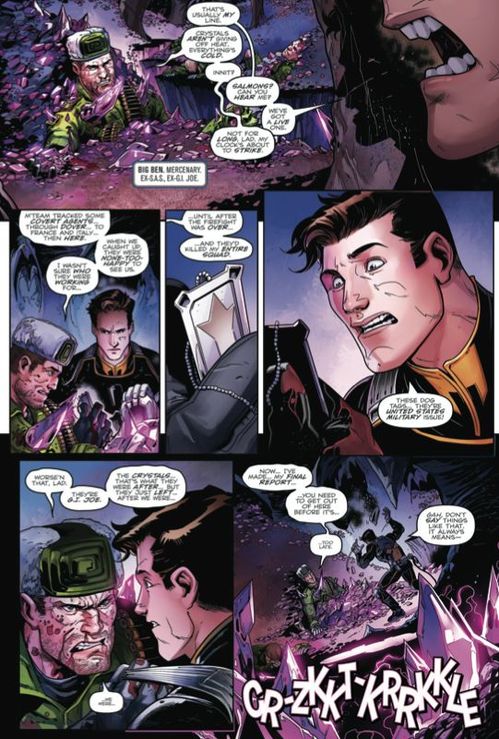
Revolution #1 Interior Art by Fico Ossio & Sebastian Cheng
Revolution is also diverse. There’s a female black president who doesn’t have a larger role than most presidents in this sort of story, but her existence is a good indication that the creators are aware of a world beyond the testosterone-soaked toy shelves. Also, the main G.I. Joe character appears to be Scarlet, which is good news not only for female readers, but for anyone who appreciates badass characters. When Scarlet says, “Robot invaders from space—are exactly the sort of thing G.I. Joe was born to fight” it’s hard not to cheer.
Ossio’s art is vivid and dynamic, striking a nice balance between toy-like and somewhat realistic. Many of the characters sport a classic design, and Ossio does those designs proud. Rom, in particular, stands out as visually striking. Whoever designed this dire-wraith-hunting spacebot deserves royalty checks galore, because his shiny white features and red eyes are sci-fi classics reminiscent of another classic design, the Cylons from Battlestar Galactica.
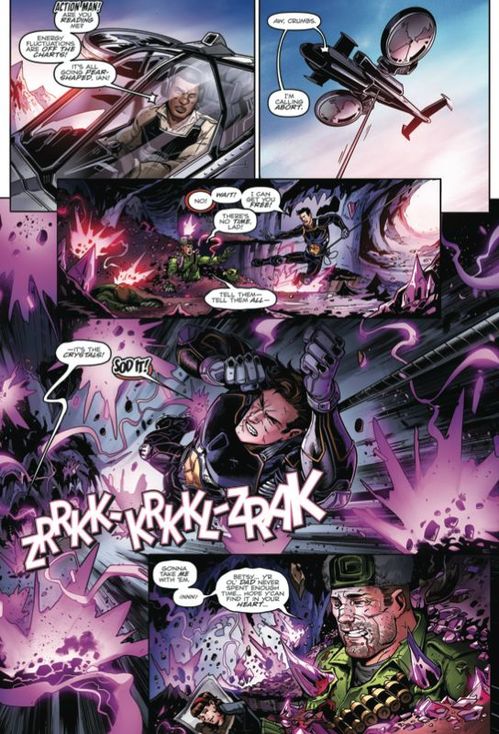
Revolution #1 Interior Art by Fico Ossio & Sebastian Cheng
Ultimately, this series is going to have a very specific audience: the kind of comic book/toy enthusiast who gets off on seeing these longtime franchises, popular and obscure, all mixed together. Revolution is a little reminiscent of another series involving an obscure set of characters with a similar sort of crazy stew: Dynamite’s Kirby: Genesis, in which Kurt Busiek, Alex Ross and Jackson Herbert threw together all the Kirby characters owned by the King himself, from ones who had their own series (like Captain Victory and Silver Star) to interpretations of Kirby drawings that were never fleshed out by the King. If you’re the kind of person who reads Jack Kirby Collector and is a fan of Kirby arcana, seeing these characters come to life is a blast. But if you’re not, the series probably comes off a bit silly. The same applies to Revolution.
If you fit into that audience, though, this promising first issue will yield plenty of curiosity about what the hell Rom is up to, when the Micronauts will show up and if super soldiers and space robots can ever get along. This will probably lead to more sales of Rom, the solo comic published by IDW, and all the other tie-ins, which is the whole point of this breed of event scheme. But even if the crass commercialism, universe envy and reboot denial are obvious, Revolution looks to be a fun ride.
